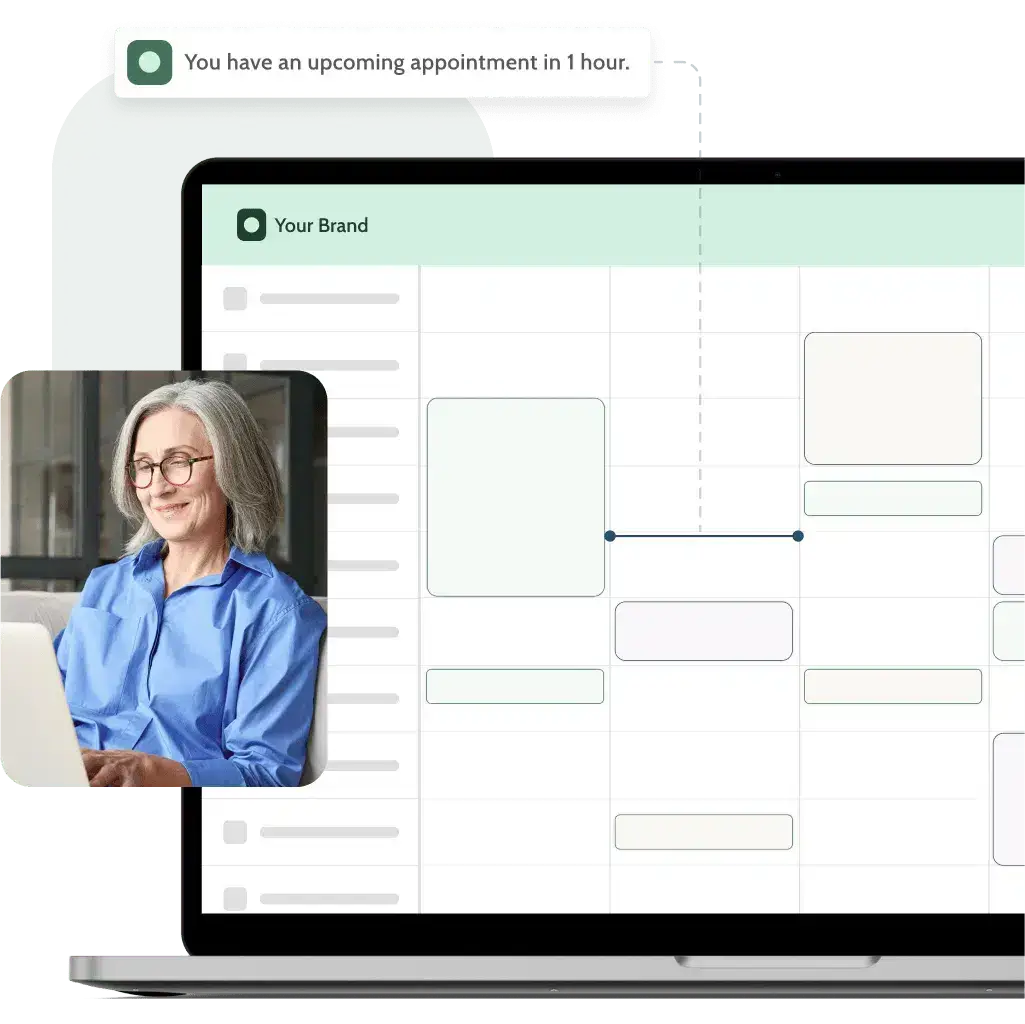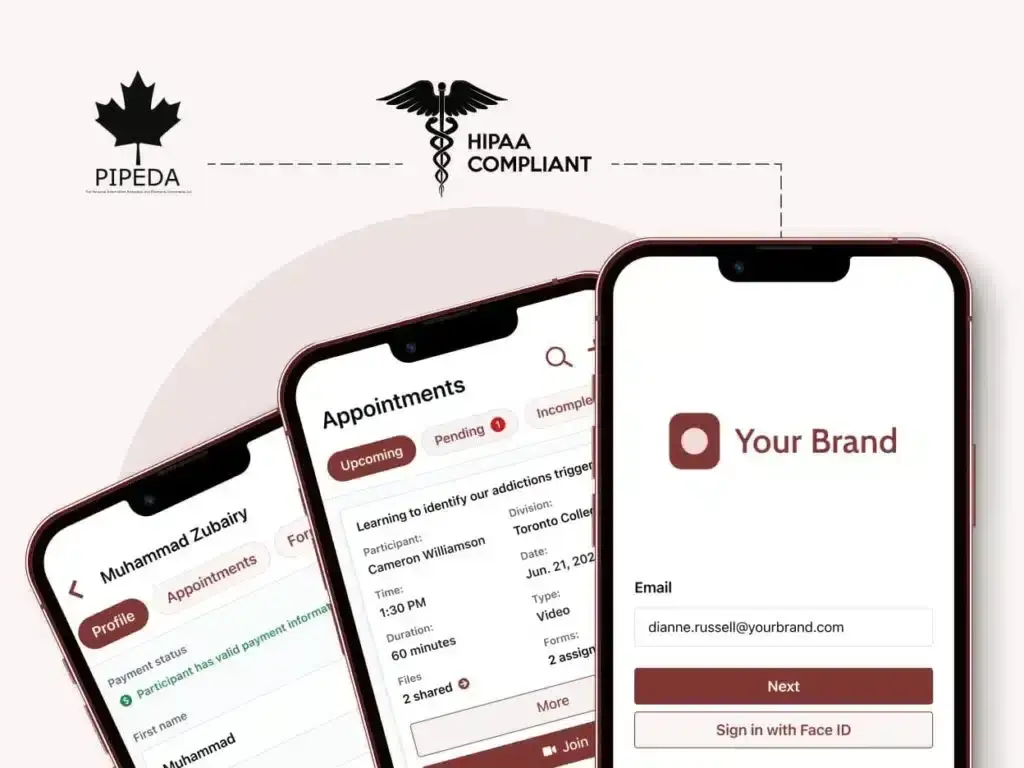A white label telehealth and patient portal enables your company and providers to be more efficient, increase value for patients, and attain a higher patient retention rate. Not only does it automate multiple workflows, engage patients in new ways, and track patient outcomes and care quality, but it can also help your company stay compliant with the 21st Century Cures Act and No Suprises Act. This is essential for behavioral health companies and their leaders looking to continue delivering quality virtual care across state lines. Patient portals are especially impactful when it comes to addressing the number of patients seeking care, which continues to rise, and the provider shortage that overshadows it. CEO of the American Psychologists Association says, “the mental health crisis continues,” with 79% of psychologists saying they are seeing more patients with depressive disorders than they did before the pandemic.
Most behavioral health companies leverage an EHR (Electronic Health Record) to manage patient care. However, their EHR is provider-facing and offers little-to-no patient engagement tools. Other than simple document-sharing features, EHRs are limited when it comes to allowing patients to access their appointment and form information, chat with their provider at any time, or sign up or new services and appointments. This is why behavioral health companies are choosing to implement a white label telehealth and patient portal—to ensure they are equipped to deliver end-to-end virtual care to a high volume of patients. It’s also why Qualifacts, the leading EHR vendor for behavioral health companies, acquired OnCall in 2022. Their goal, along with OnCall’s, is to develop end-to-end interoperable telehealth software that makes delivering and receiving care easy.
Your behavioral health company is ready to implement a white label telehealth and patient portal. So, what comes next?
OnCall recommends your company and its leadership team complete three steps prior to implementation. Step one is making sure the portal has the basic tools you need to deliver care immediately. We also suggest evaluating the portal’s interoperability features to ensure it integrates with your EHR. Once you have chosen the right portal for your company, we recommend collaborating with the vendor’s customer success team to map workflows and train staff on how to use and optimize the portal for your company.
Step 1: Confirm Features
Efficient and effective virtual care requires the ability for providers and patients to connect virtually both synchronously and asynchronously, the ability for patients to access their healthcare information easily, and document sharing features that enable your company to securely share forms and files with patients. For example, patients should be able to meet with your providers over video or phone and use instant messaging tools to connect with providers outside of scheduled appointments. In addition, patients should have direct access to their appointment information stored in the portal. This may mean their consent forms, appointment notes, or purchase receipts. Not only do these features fulfill the requirements of the Cures and No Suprises Act; they also help patients feel more connected to their care. When patients are engaged in their care, whether that be through constant communication with providers and accessing files through their portal, they are more likely to complete their programs and attain better health outcomes.
Patients are expecting their healthcare experience to mirror that of their bank or favorite store; digital, accessible, outcomes oriented, and secure. Your white label telehealth and patient portal should meet all HIPAA requirements to keep patient information safe. Additional security features such as country-based servers where patient information is stored, and ongoing security audits assures patients that their data and personal information is safe.

Step 2: Evaluate Interoperability
Carrie Singer, behavioral health thought leader, Psy.D, Licensed Psychologist and Executive Director says that “integrated healthcare technology is not only what providers need, but what patients require to receive quality care.” This is because an integrated tech stack helps standardize patient data across your organization, reduces human error, and makes providers and administrators more efficient. OnCall recommends that you evaluate the integration options presented by the patient portal of your choice. The most significant integration is that between your EHR and white label telehealth and patient portal, which ensures that data and information flows freely across your organization. With free-flowing data, providers and administrators can manage patients and their care in a more efficient way with the information they need at their fingertips, helping them treat more patients holistically and effectively.
An integrated tech stack also eliminates hours of manual administrative work for staff by reducing data entry redundancy and human error. Information entered into your patient portal is automatically shared with your EHR and vice-versa, meaning that staff no longer input the same patient, appointment, payment, or insurance information into multiple systems. This can save your company up to 14% in administrative time, translating to over $50K in potential additional monthly appointment revenue.
Step 3: Collaborate with your vendor
Once you have evaluated and chosen a white label telehealth and patient portal for your behavioral health company, OnCall recommends collaborating with the vendor’s customer success team to map your desired workflows, develop an implementation plan, and create a training strategy for your company’s staff. This onboarding process is a critical step as you integrate a patient portal into your company’s tech stack. To start off on the right foot, request that your vendor help your company set attainable annual goals for your patient portal. Perhaps that’s making your admissions process completely digital through the portal or having the ability to track and measure patient outcomes so your company can improve services. Setting KPIs (Key Performance Indicators) establishes a solid foundation on which your company can educate staff, onboard patients, and enhance care over time. Your customer success team can continue to make improvements to your white label telehealth and patient portal and processes so your company can reduce your no-show rate, create automations to maximize staff efficiency, and generate additional revenue.

Next steps
As a patient-facing tool, the goal of a patient portal is to create a seamless virtual healthcare experience that feels and looks the same as an in-person care experience might. The white label telehealth and patient portal should be easy to use and navigate, for both the patient and your staff, and can easily be scaled across business units and state lines. Each behavioral health company might have its unique needs; however, the best patient portal will be able to achieve those requirements from the get-go for any company. A white label telehealth and patient portal is essential for any behavioral health business looking to grow their services and retain more patients, and we encourage all behavioral health leaders to consider the benefits of what a portal can do for you company. If you have questions about patient portals or need help evaluating portal options, get in touch with us here.
